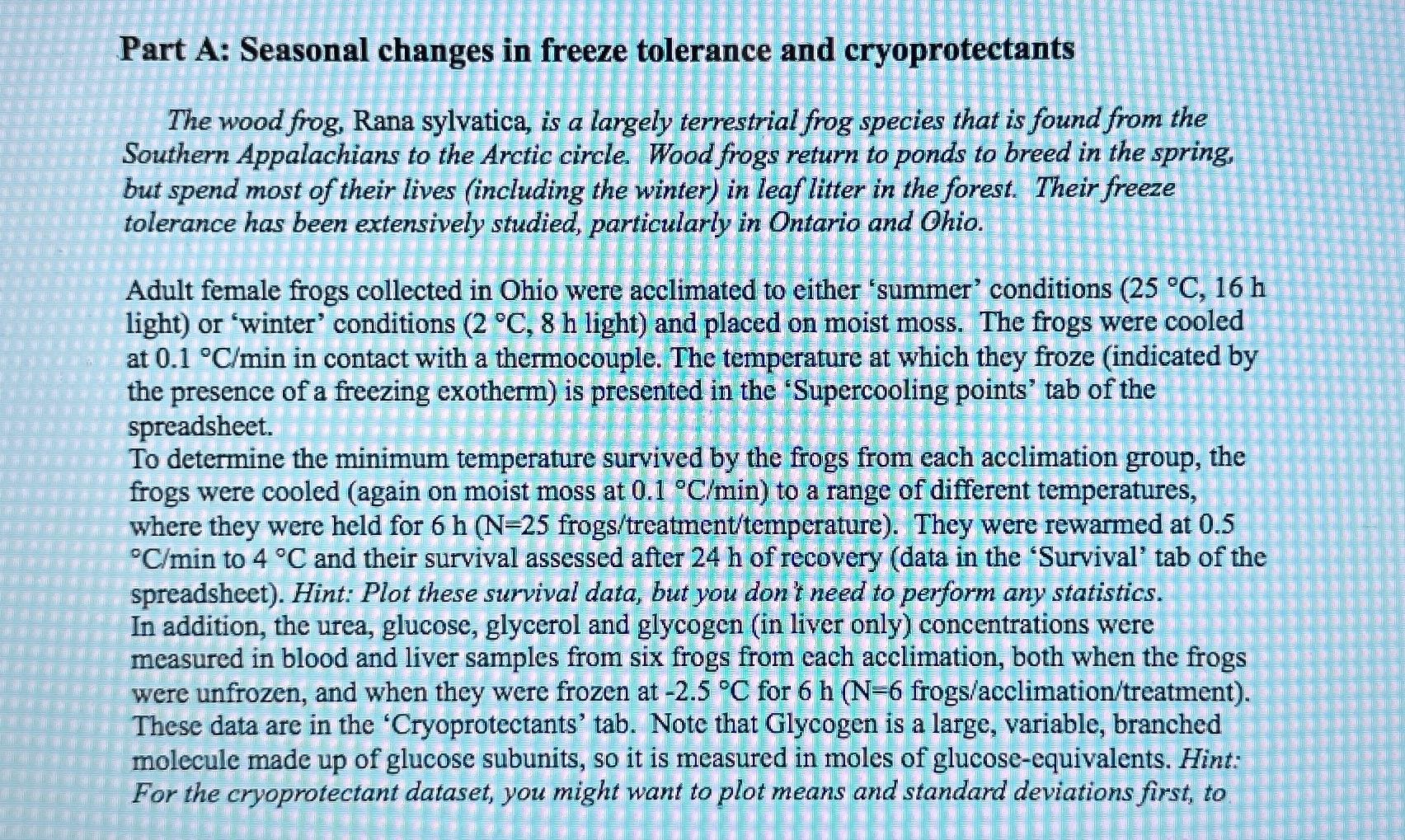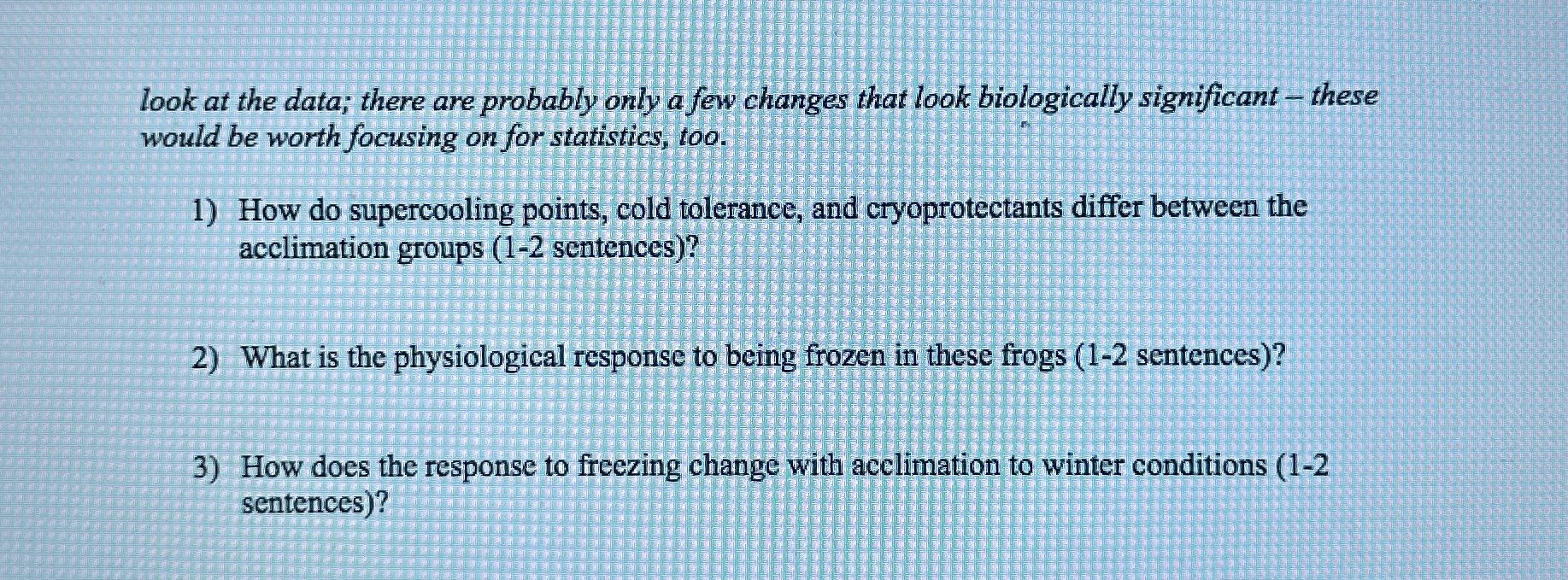Answered step by step
Verified Expert Solution
Question
1 Approved Answer
Part A: Seasonal changes in freeze tolerance and cryoprotectants The wood frog, Rana sylvatica, is a largely terrestrial frog species that is found from


Part A: Seasonal changes in freeze tolerance and cryoprotectants The wood frog, Rana sylvatica, is a largely terrestrial frog species that is found from the Southern Appalachians to the Arctic circle. Wood frogs return to ponds to breed in the spring, but spend most of their lives (including the winter) in leaf litter in the forest. Their freeze tolerance has been extensively studied, particularly in Ontario and Ohio. Adult female frogs collected in Ohio were acclimated to either 'summer' conditions (25 C, 16 h light) or 'winter' conditions (2 C, 8 h light) and placed on moist moss. The frogs were cooled at 0.1 C/min in contact with a thermocouple. The temperature at which they froze (indicated by the presence of a freezing exotherm) is presented the 'Supercooling points' tab of the spreadsheet. To determine the minimum temperature survived by the frogs from each acclimation group, the frogs were cooled (again on moist moss at 0.1 C/min) to a range of different temperatures, where they were held for 6 h (N=25 frogs/treatment/temperature). They were rewarmed at 0.5 C/min to 4 C and their survival assessed after 24 h of recovery (data in the 'Survival' tab of the spreadsheet). Hint: Plot these survival data, but you don't need to perform any statistics. In addition, the urea, glucose, glycerol and glycogen (in liver only) concentrations were measured in blood and liver samples from six frogs from each acclimation, both when the frogs were unfrozen, and when they were frozen at -2.5 C for 6 h (N-6 frogs/acclimation/treatment). These data are in the 'Cryoprotectants' tab. Note that Glycogen is a large, variable, branched molecule made up of glucose subunits, so it is measured in moles of glucose-equivalents. Hint: For the cryoprotectant dataset, you might want to plot means and standard deviations first, to look at the data; there are probably only a few changes that look biologically significant - these would be worth focusing on for statistics, too. 1) How do supercooling points, cold tolerance, and cryoprotectants differ between the acclimation groups (1-2 sentences)? 2) What is the physiological response to being frozen in these frogs (1-2 sentences)? 3) How does the response to freezing change with acclimation to winter conditions (1-2 sentences)?
Step by Step Solution
There are 3 Steps involved in it
Step: 1
1 The supercooling points cold tolerance and cryoprotectants differ between the acclimation groups F...
Get Instant Access to Expert-Tailored Solutions
See step-by-step solutions with expert insights and AI powered tools for academic success
Step: 2

Step: 3

Ace Your Homework with AI
Get the answers you need in no time with our AI-driven, step-by-step assistance
Get Started


